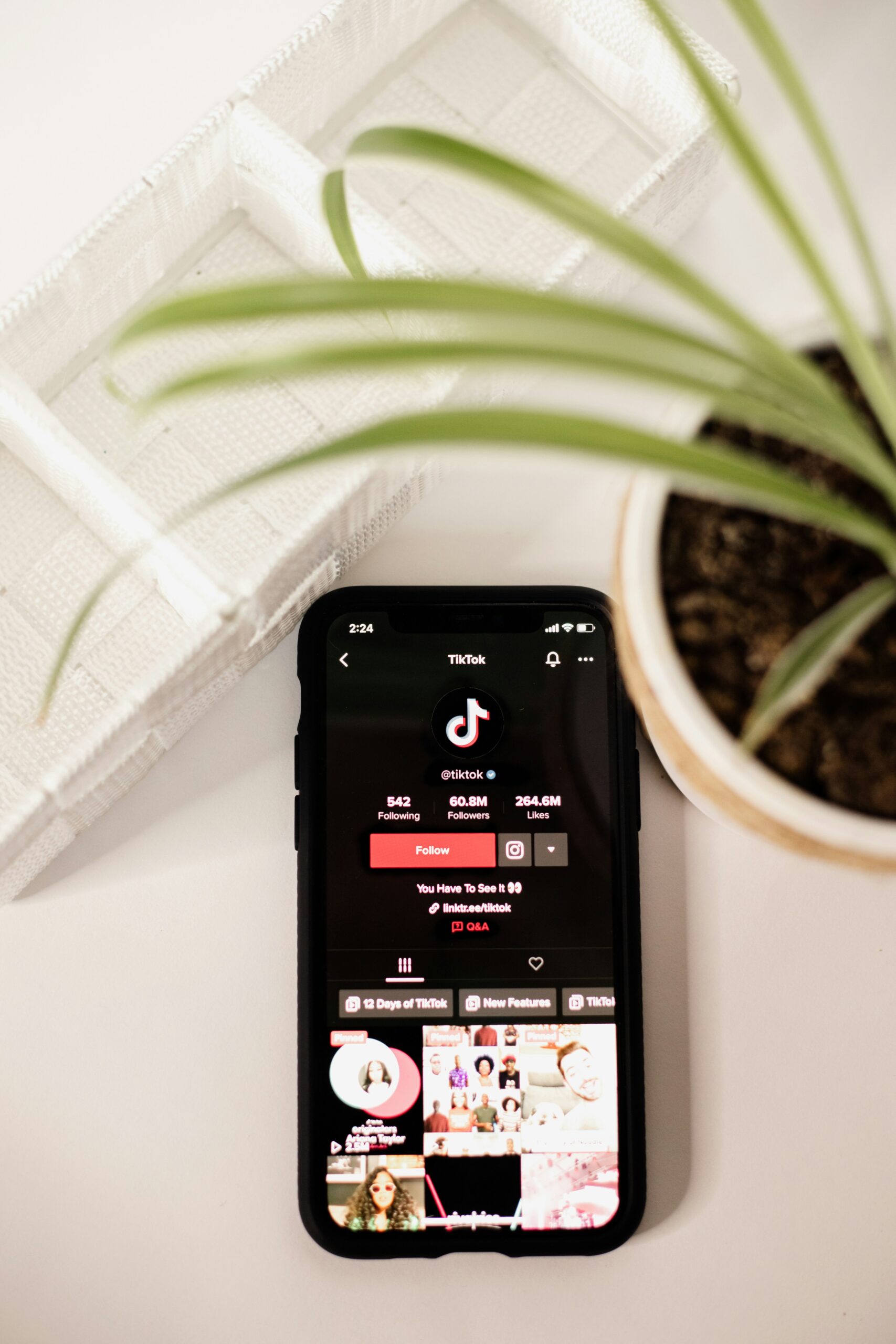Introduction to TikTok’s Ban and Its Return
TikTok, a social media platform that gained immense popularity for its short-form videos, has been at the center of a contentious debate regarding data privacy and national security. The app, owned by the Chinese company ByteDance, faced scrutiny in the United States due to concerns that user data could be accessed by the Chinese government. In 2020, amid rising tensions between the two countries, the Trump administration attempted to impose a ban on TikTok, citing these security concerns as a primary reason. This prompted legal battles and public outcry as millions of users rallied in support of the app, highlighting its significance in contemporary digital culture.
The proposed ban and subsequent legal challenges effectively put the future of TikTok in the United States in jeopardy. However, following extensive negotiations and modifications aimed at addressing security apprehensions, TikTok was able to navigate regulatory hurdles. The app was reinstated on app store platforms, signaling a critical turnaround in its legal battles and ongoing operational status. This return not only allowed users to access the platform once more but also underscored the resilience of the brand within the volatile social media ecosystem.
Today, TikTok is not just a platform for entertainment but a global phenomenon influencing trends, marketing strategies, and even political discourse. Its reinstatement reflects not only the importance of user engagement but also the ongoing evolution of regulatory frameworks surrounding social media. As we delve deeper into the events leading to its ban and return, it becomes evident that TikTok’s journey is emblematic of broader conversations about privacy, technology, and user rights. This exploration sets the groundwork for understanding the implications of TikTok’s presence in the social media landscape and its potential trajectory moving forward.
The Timeline of TikTok’s Ban: Key Events
The narrative surrounding TikTok’s ban in the United States unfolded rapidly, marked by a series of significant events that shaped public perception and governmental policy. The origins of this turmoil date back to August 6, 2020, when then-President Donald Trump signed an executive order aimed at banning TikTok, citing national security concerns due to its Chinese ownership. This marked the beginning of a turbulent period for the popular video-sharing platform.
In response to the executive order, TikTok initiated legal proceedings. On August 14, 2020, the company sought to challenge the proposed ban, arguing that the order was unconstitutional and lacked evidence to substantiate the claims of threat to national security. Meanwhile, a parallel narrative emerged as the U.S. government sought to explore options for forcefully separating TikTok from its Chinese parent company, ByteDance, with the goal of making TikTok a purely American entity.
Fast forward to September 2020, the developments accelerated as negotiations were made with potential American investors, including Oracle and Walmart, to create a new ownership structure for TikTok. However, just as talks seemed to be progressing, federal court decisions complicated the scenario. By late September 2020, a federal judge granted TikTok a temporary reprieve, allowing the app to continue operating in the U.S., but uncertainty lingered.
The Biden administration, which took office in January 2021, revisited the issue, calling for a review of the previous administration’s actions. By June 2021, amidst ongoing discussions regarding data security and privacy, TikTok announced plans to enhance transparency and data protection measures to alleviate concerns raised by regulators. Public sentiment regarding the app fluctuated during this period, especially among younger users, who rallied around the platform. This trajectory of events has been pivotal in shaping the conditions under which TikTok has strived to return from its state of disarray.
Why Was TikTok Banned? The Underlying Issues
The controversy surrounding TikTok and its eventual ban can be attributed to a myriad of concerns, primarily revolving around data privacy, national security, and the influence of foreign entities. The U.S. government’s stance was fueled by apprehensions that the app, owned by the Chinese company ByteDance, could potentially share user data with the Chinese government, compromising the privacy and security of American citizens.
One of the key issues driving the call for a ban was the claim that TikTok could be utilized as a tool for surveillance, thereby posing a threat to national security. The fear was that the app could be accessed to collect sensitive information such as location data, browsing habits, and personal messages. This has raised significant alarm among U.S. officials, leading them to argue the necessity of protecting citizens’ data from potential foreign misuse.
Additionally, the app was viewed as a platform that could influence public opinion and manipulate content, which contributed to the growing concerns around its impact on social discourse. Critics pointed to TikTok’s ability to disseminate misinformation or propaganda, thereby affecting the American electoral process and social cohesion. As a result, arguments were presented both for and against the ban, with proponents highlighting the need for stringent regulations to safeguard citizens against such threats, while opponents argued that banning the app undermined freedom of expression and could stifle innovation within the tech sector.
In light of these concerns, the debate surrounding TikTok’s future in the U.S. has continued to evolve, reflecting broader tensions related to global digital governance and the interplay of technology and national security. Understanding these underlying issues is essential to grasp the complexities of TikTok’s ban and its subsequent journey toward potential reinstatement.
The Role of Legal Battles and Supreme Court Decisions
The journey of TikTok’s return has been significantly shaped by a series of legal battles and key Supreme Court decisions. Initially, the app faced immense scrutiny from the U.S. government, which raised national security concerns that ultimately led to an executive order seeking its ban. This executive action initiated a flurry of lawsuits from TikTok, claiming that the ban was unconstitutional and infringed upon the rights of both the company and its users.
Throughout the legal proceedings, various Federal Courts were tasked with evaluating the constitutionality of the executive ban. These courts, in multiple rulings, found that the government had not sufficiently proven the national security threat posed by the app. The consistent legal pushback from TikTok underscored the argument that the platform, which boasts millions of American users, played a vital role in free expression and communication. This narrative gained traction as users rallied behind the platform, demonstrating its cultural significance beyond workplace and political realms.
The Supreme Court’s involvement became a pivotal moment in TikTok’s legal saga. As various appeals reached the nation’s highest court, key justices weighed in on the implications of limiting access to TikTok. While several justices voiced concerns regarding the potential overreach of executive power, others sought to understand the balance between national security interests and constitutional rights. Ultimately, these debates played a crucial role in shaping the discourse around social media regulation in the modern digital landscape.
These court decisions cumulatively indicated a growing recognition of the importance of digital platforms in contemporary society. By reversing earlier rulings, the legal landscape shifted favorably for TikTok, allowing the app to resume operations in the U.S. This outcome not only marked a significant victory for TikTok but also set a noteworthy precedent regarding the legal treatment of tech giants in an evolving legal framework.
How TikTok Managed Its Comeback
The resurgence of TikTok in a competitive app landscape can be attributed to a multifaceted strategy that included robust negotiations with government entities, significant adjustments in policies, and innovative public relations campaigns. Following the initial ban, TikTok recognized the necessity of fostering transparent communication with relevant authorities to alleviate concerns regarding data privacy and security.
One of the pivotal strategies employed by TikTok was to engage in dialogues with national governments to negotiate terms that would allow for its continuance in the App Store. By proactively addressing the apprehensions surrounding user data management, TikTok implemented stringent measures designed to enhance data security. For example, the company established data centers in various regions, ensuring that local data is stored domestically, which helps mitigate fears of foreign surveillance. These steps not only increased transparency but also demonstrated TikTok’s willingness to comply with regulatory measures.
In addition to negotiations, TikTok undertook considerable changes in its content moderation policies. This involved creating comprehensive guidelines to ensure that the platform upheld community standards while simultaneously promoting user safety. By showcasing its dedication to curbing harmful content and fostering a positive online environment, TikTok attracted public support and trust. Alongside these internal changes, the platform launched extensive public relations campaigns to enhance its image. These campaigns highlighted user stories and the platform’s role in creative expression, which resonated well with various demographics.
Through a commitment to adaptability and compliance, TikTok not only managed to navigate the challenges posed by regulatory scrutiny but also reinforced its position as a leader in the social media landscape. The combination of proactive government negotiations, policy enhancements, and effective communication strategies has grounded TikTok’s comeback, ensuring it remains a prominent player in the digital realm moving forward.
Downloading TikTok Again: A Step-by-Step Guide
As TikTok makes its return to various app stores, many users are eager to download it once again. This guide will walk you through the process of downloading TikTok, ensuring you can quickly return to enjoying your favorite short videos. First, it is essential to confirm your device’s compatibility with the app. TikTok is available on both iOS and Android platforms, so users with compatible smartphones or tablets can easily access the app. For iOS devices, ensure you are running iOS version 11 or higher. Android users need to have Android version 4.1 and above to enjoy a smooth TikTok experience.
Next, check the availability of TikTok in your region. TikTok’s return might vary by location due to regulatory considerations; therefore, confirming that the app is officially available in your country is crucial. Visit your device’s respective app store—either the App Store for iOS devices or Google Play Store for Android devices. You can use the search function to locate TikTok. If the app appears in the search results, you are set to download it.
For a successful download, simply click on the ‘Get’ or ‘Install’ button, depending on your device. The app will begin downloading and will automatically install once completed. If you encounter any issues during the download process, there are a few troubleshooting steps you can take. First, check your internet connection to ensure it is stable. You may also want to clear your app store cache. If the problem persists, restarting your device can often resolve temporary glitches.
Once the installation is complete, you can open TikTok and log in or create a new account, allowing you to immerse yourself in the vibrant world of user-generated content once again.
Current Ownership and Management of TikTok
As of October 2023, TikTok is owned by ByteDance, a multinational internet technology company headquartered in Beijing, China. Since its launch, TikTok has experienced significant growth, becoming one of the leading platforms for short-form video content worldwide. This remarkable rise has been facilitated by ByteDance’s innovative strategies and financial investments.
The current CEO of TikTok is Shou Zi Chew, who has been at the helm since April 2021. Under his leadership, TikTok has focused on expanding its user base, developing features to enhance user engagement, and ensuring compliance with regulatory requirements across different markets. His background in finance and technology provides a unique perspective that aids in navigating the complexities faced by the platform, particularly regarding data privacy and adherence to local laws.
Leadership at TikTok plays a crucial role in shaping the company’s operations and response to global regulatory challenges. The executive team, along with Shou Zi Chew, emphasizes transparency and trust, actively engaging with governments to address concerns related to user data protection and content moderation. This proactive approach is essential, especially in regions where data handling practices are under scrutiny, such as the European Union and the United States.
Furthermore, TikTok’s management has shown a commitment to localizing their content and operations, which involves partnering with local creators and businesses to enhance user experience. This strategy not only helps in building a stronger community around the platform but also mitigates potential backlash from local authorities. The blend of ByteDance’s resources and TikTok’s innovative spirit suggests that the platform is well-positioned to adapt and thrive despite ongoing regulatory pressures.
Public Response to TikTok’s Return: Users and Creators Speak
The return of TikTok has sparked a varied range of reactions from its diverse user base, including casual users, content creators, and influential figures. Many users have expressed elation at the platform’s reinstatement, highlighting its unique ability to provide entertainment, foster creativity, and facilitate connection within virtual communities. The app has become a vital tool for many, allowing them to express their thoughts through short, engaging videos. This has led to a sense of community that users feel is unparalleled in other social media platforms.
However, not all responses have been positive. Concerns regarding the application’s safety and data privacy remain at the forefront of discussions among creators and everyday users alike. Some influencers are cautioning their followers about potential risks associated with the application’s data gathering practices. Users have voiced anxieties about the implications of a platform that has previously faced bans over security concerns, emphasizing the importance of user privacy and ethical data handling.
On the other hand, many content creators view TikTok as crucial for their careers, as it offers them a platform to reach wider audiences and engage with their fans more directly. These creators argue that TikTok not only enables them to showcase their talents but also helps to drive cultural trends and engage in meaningful discourse. The platform has allowed for niche communities to thrive, supporting various forms of expression and increasing visibility for underrepresented voices.
As the dialogue surrounding TikTok’s return continues to evolve, users remain divided. This discourse underscores the complexities of modern social media and the implications of a platform’s return for its vast user base. While appreciation for its creative potential exists, the ongoing discussions about safety and relevance linger, signifying a dynamic balance in the future of TikTok in the evolving landscape of social media.
Future Prospects: Is TikTok Really Back for Good?
The resurgence of TikTok has garnered considerable attention, prompting questions about its long-term viability in the rapidly evolving social media landscape. As the platform regains momentum, several factors will influence its enduring presence. These include potential regulatory challenges, competition from other platforms, and the overall adaptability of TikTok to changing user preferences.
Regulatory scrutiny remains a significant concern for TikTok, particularly given its history with various governments. In recent months, lawmakers in numerous countries have expressed apprehensions regarding data privacy, security, and the app’s influence on youth. If stringent regulations are implemented, they could impede TikTok’s growth and user engagement. On the other hand, if the platform can navigate these challenges successfully, it may re-establish itself as a dominant force in the social media realm.
Another critical aspect to consider is the competition posed by other social media giants. Platforms like Instagram, YouTube, and Snapchat continuously innovate to capture the attention of potential users. For instance, Instagram has introduced Reels, a feature that closely mirrors TikTok’s short-video format. As these platforms evolve, TikTok must invest in new features and user experiences to maintain its unique appeal. The ability to differentiate itself while evolving with trends is paramount for its sustainability.
Lastly, understanding evolving user preferences is essential for TikTok’s future. As the demographic of social media users shifts, TikTok must ensure that its content resonates with its audience. Engaging creators and fostering a vibrant community will be vital in retaining users in the long term. If TikTok can successfully address these multifaceted challenges, it holds the potential to solidify its place in the competitive landscape of social media platforms, making its return not just a fleeting moment but a lasting revival.



